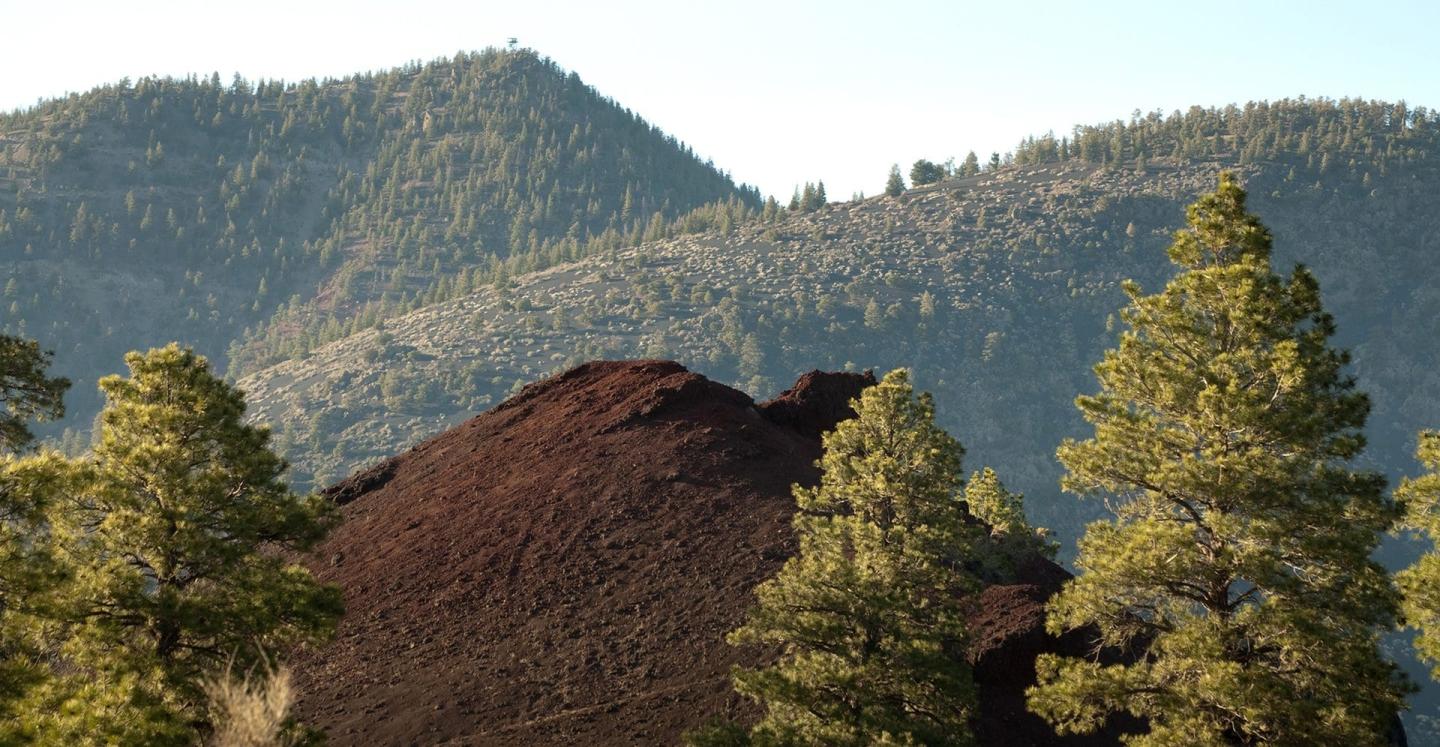
See Arizona's Remarkable Wonders and Volcanic History in National Parks

Arizona has some of the most beautiful, culturally significant landscapes in the nation. Whether you’re visiting the Grand Canyon State for the first time or looking to get better acquainted with your home state, make sure these three national monuments make it on your map. The diverse landscapes of northern Arizona hold traces of a vibrant past and dramatic natural forces that shaped the land. Just a few hours north of Phoenix, these three national monuments nestled together invite you to connect with Indigenous heritage, encounter volcanic formations, and take in sweeping vistas. From cliff dwellings to lava flows, get ready for an unforgettable journey through the culture and geology of this beautiful region.

Cliffside Homes at Walnut Canyon
If you’re starting from Phoenix, you’ll hit Walnut Canyon National Monument in about two and a half hours. Since ancient times, Indigenous peoples have lived and traveled throughout Walnut Canyon’s cliffs and rim. Around 1150 CE, during a period of increased rainfall, ancestral Puebloan people built homes in the canyon’s limestone alcoves and farmed the rim above. Take the Island Trail’s 240 stone steps down 185 feet to get eye-level with 25 cliff dwelling rooms. Gaze across the gorge’s pine-dotted slopes and imagine the vital communities that flourished here, and whose descendants still thrive in the area. The Island Trail and Rim Trail give you a chance to walk in the footsteps of those who came before.
Check NPS.gov for current alerts. For help planning your trip, check out DiscoverFlagstaff and VisitArizona.
Pets are permitted on the Rim Trail at Walnut Canyon National Monument.
Camping is not permitted within Walnut Canyon, however, the United States Forest Service (USFS) operates a number of campgrounds in the Flagstaff area. For more information, visit the Coconino National Forest campground site.

A Volcano Frozen in Time at Sunset Crater
Only a 15-minute drive separates Walnut Canyon from Sunset Crater Volcano National Monument. Roughly 900 years ago, the earth tore open and lava exploded skyward at Sunset Crater, forever transforming the landscape. Today, you can see and walk among the colorful volcanic features that remain. Hike the one-mile Lava Flow Trail across an otherworldly terrain of twisted, frozen-in-place lava. This trail is accessible for wheelchairs and strollers. It passes by lava formations as it loops through the Bonito Lava Flow at the base of the crater. For panoramic views, take the short Bonito Vista Trail. More adventurous hikers can climb the Lenox Crater Trail for sweeping vistas of the San Francisco Peaks. The A’a Trail and Lava’s Edge Trail also deliver close-up looks at the rough, jagged lava flows that once engulfed this area. Sunset Crater’s volcanic wonders seem almost dreamlike against the lush ponderosa pine forest that now grows on the lava flow’s surface. Gaze in awe at nature’s destructive yet creative force.
Check NPS.gov for current alerts. For help planning your trip, check out DiscoverFlagstaff and VisitArizona.
Pets are permitted on some trails at Sunset Crater Volcano National Monument.
Camping is not permitted within Sunset Crater Volcano National Monument, however Bonito Campground, which is operated by the USFS, is located right across from the visitor center.

Hidden Oasis at Wupatki National Monument
Thirty minutes north of Sunset Crater Volcano is Wupatki National Monument. There, you’ll find an unexpected cultural center amidst the red sandstone outcrops and open vistas. From 1125 to 1225 CE, ancestral Puebloan builders constructed more than 100 masonry rooms, trading centers, and ball courts here. Walk among well preserved structures like the namesake Wupatki Pueblo, the multistory Wukoki Pueblo, and Lomaki Pueblo. At Wukoki Pueblo, a striking geologic formation juts up behind the ancient dwellings. As you explore Wupatki’s trails, keep an eye out for petroglyphs carved into the boulders—intriguing remnants of the people who once called this high desert outpost home.
Check NPS.gov for current alerts. For help planning your trip, check out DiscoverFlagstaff and VisitArizona.
Pets are permitted on paved portions the Lava Flow Trail at Wupatki National Monument.
Camping is not permitted within Wupatki, however, the USFS operates a number of campgrounds in the Flagstaff area. For more information, visit the Coconino National Forest campground site.

Flagstaff National Monuments:
Walnut Canyon, Sunset Crater Volcano, Wupatki
With traces of rich cultures, volcanic drama, and striking desert scenery, Walnut Canyon, Sunset Crater, and Wupatki deliver unforgettable experiences. As you explore their trails and sites, think of those who came before on this rugged and beautiful land. All three parks have been certified as International Dark-Sky Parks by the DarkSky Association, which means they protect stunning night skies from light pollution and help to preserve wildlife that thrive in dark skies. Day or night, discover Arizona’s wonders for yourself!
By Julie Thompson

Want to show your love and support for these incredible lands?
Shop WNPA’s collection of apparel, books, collectibles, and more!






